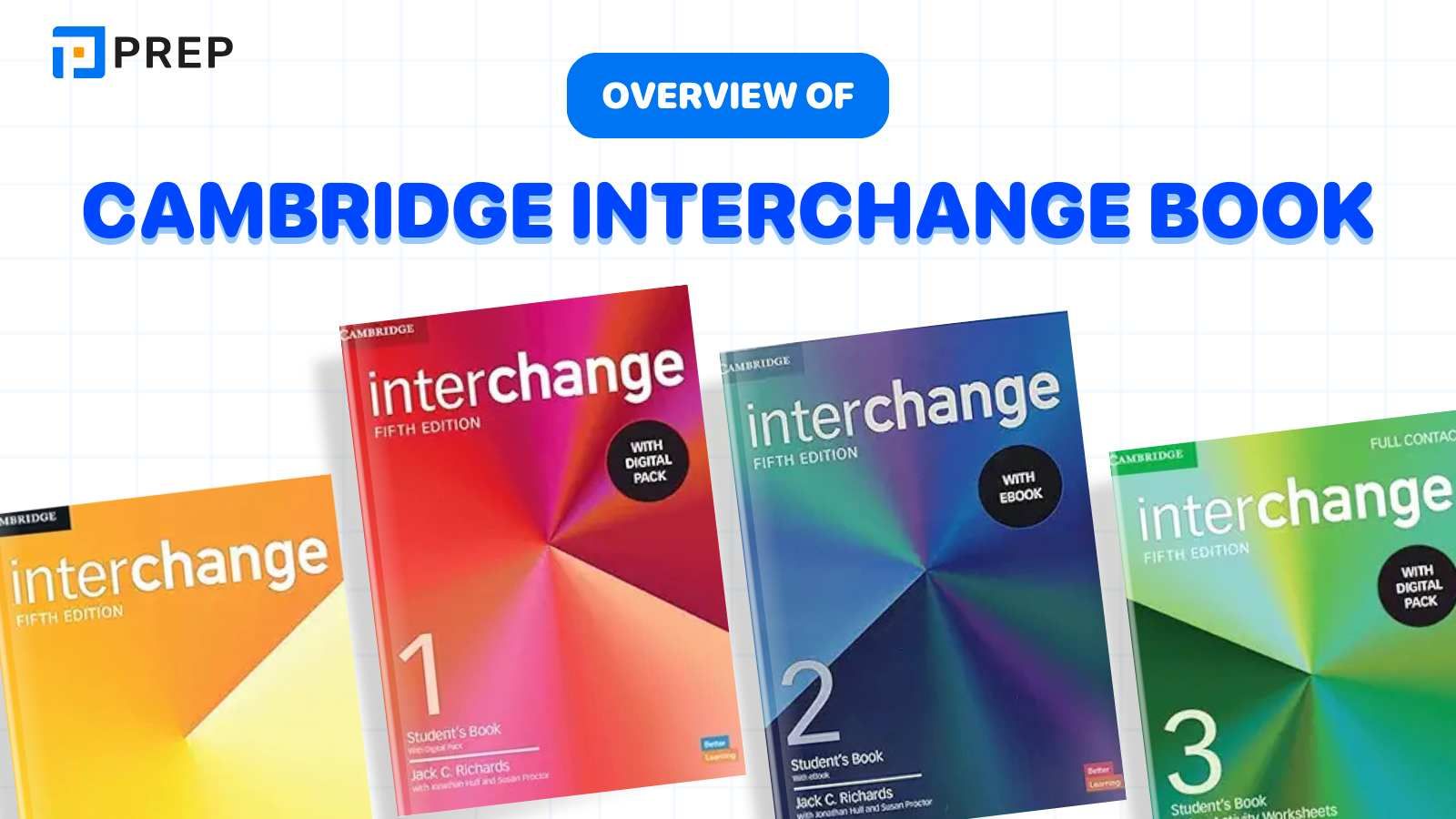Search blog
Learn by heart how to read prices in English for better communication
Each country uses different currency units and the value of each currency also varies considerably. Therefore, have you fully grasped the proper rules for pronouncing prices in English yet? PREP will compile the techniques for stating numbers in English to help you communicate more effectively in the article below! Please check it out!

-
- I. The importance of knowing how to say prices in English
- II. Common currency units and other vocabulary
- III. How to write the monetary amount in English
- IV. How to read prices in English
- V. Reading method for prices in English with common currency units
- VI. Exercises on how to read prices in English (with answers)
I. The importance of knowing how to say prices in English
Money is a topic that frequently comes up in our daily interactions. Mastering how to properly pronounce monetary amounts will help you communicate more naturally in many situations, such as when using food and beverage services, conducting leisure activities, exchanging information at work (especially in business fields), and more.
Furthermore, money-related information often appears in the IELTS Listening Part 1 test, requiring candidates to comprehend and provide answers regarding numbers and prices in English. Hence, memorizing how to read prices in English will enhance not just your success in achieving a high band score in the Listening test but also your overall communication proficiency.
II. Common currency units and other vocabulary
Before learning how to read prices in English, students should strengthen some foundational knowledge regarding common monetary units as well as vocabulary for discussing money in English. Please refer to the tables below!
1. Common currency units

|
Currency unit |
Sign |
Transcription |
Pronunciation |
|
USD |
$ |
US dollar |
/juː.ɛs ˈdɑː.lɚ/ |
|
EUR |
€ |
Euro |
/ˈjʊə.rəʊ/ |
|
JPY |
¥ |
Japanese yen |
/ˌdʒæpəˈniːz jɛn/ |
|
GBP |
£ |
British pound |
/brɪtɪʃ paʊnd/ |
|
AUD |
$ |
Australian dollar |
/ɔːˈstreɪ.li.ən ˈdɒlə(r)/ |
|
CAD |
$ |
Canadian dollar |
/ˈkænədiən ˈdɒlə(r)/ |
|
CHF |
Fr |
Swiss franc |
/swɪs fræŋk/ |
|
VND |
₫ |
Vietnamese Dong |
/viˌɛtnəˈmis ˈdɒŋ/. |
|
CNY |
¥ |
Chinese yuan |
/tʃaɪˈniːz juːˈɑːn/ |
2. Common English vocabulary related to money
|
Word |
Pronunciation |
|
currency |
/ˈkʌrənsi/ |
|
exchange rate |
/ɪksˈtʃeɪndʒ reɪt/ |
|
inflation |
/ɪnˈfleɪʃn/ |
|
deflation |
/dɪˈfleɪʃn/ |
|
devaluation |
/diːˌvæljuˈeɪʃn/ |
|
appreciation |
/əˌpriːʃiˈeɪʃn/ |
|
exchange rate regime |
/ɪksˈtʃeɪndʒ reɪt ˈriːʒiːm/ |
|
central bank |
/ˈsɛntrəl bæŋk/ |
|
interest rate |
/ˈɪntrɪst reɪt/ |
|
reserve currency |
/rɪˈzɜːv ˈkʌrənsi/ |
|
foreign exchange market |
/ˈfɒrɪn ɪksˈtʃeɪndʒ ˈmɑːkɪt/ |
|
banknote |
/ˈbæŋknoʊt/ |
|
coin |
/kɔɪn/ |
|
ATM (Automated Teller Machine) |
/ˌeɪtiːˈɛm/ |
III. How to write the monetary amount in English
Before learning how to read monetary amounts in English, let’s dive into how to write numbers first! Having a clear grasp of writing methods will also support you in completing English Writing and Listening tasks related to prices more accurately!
|
Rule |
Example |
| Commas are used to separate numbers into thousands, hundreds of thousands, millions, and billions. |
|
|
The decimal point is used to separate the whole number portion from the fractional portion of a monetary value. For the Euro currency, either a comma (,) or decimal point (.) can be used to distinguish the integral and fractional components. |
|
IV. How to read prices in English
Here are the specific ways to pronounce prices in English. Mastering them will allow you to communicate with greater confidence.
The first rule you need to remember is: add an "s" after the currency unit if the amount is greater than one. For example:
- $48: Forty-eight dollars
- £60: Sixty pounds
It's important to note that the first rule only applies to some specific currency units below:
|
USD |
$ |
US dollar |
/juː.ɛs ˈdɑː.lɚ/ |
|
EUR |
€ |
Euro |
/ˈjʊə.rəʊ/ |
|
GBP |
£ |
British pound |
/brɪtɪʃ paʊnd/ |
|
AUD |
$ |
Australian dollar |
/ɔːˈstreɪ.li.ən ˈdɒlə(r)/ |
|
CAD |
$ |
Canadian dollar |
/ˈkænədiən ˈdɒlə(r)/ |
This rule does not apply to currency units such as Vietnam dong, Japanese yen or Chinese yuan.
1. Fixed amount of money
1.1. Integer amount
To read an integer amount, we read it like a cardinal number and then add the currency unit after it. For example:
- $500: “five hundred dollars”
- $123,456: “one hundred twenty-three thousand, four hundred and fifty-six dollars”
- 5000 VND: “five thousand Vietnamese dong”
“One” is replaceable by “a”. For example:
- 125€ – A (one) hundred and twenty-five euros.
- 156¥ - A (one) hundred and fifty-six yuan.

1.2. Decimal number
- To read prices with decimals, follow the typical way of reading decimal numbers. Then add the currency unit at the end or, more commonly, read the whole number portion followed by the currency unit + "and" + decimal portion + smaller currency unit. For example: $47.90: Forty-seven point nine dollars/ Forty-seven dollars and ninety cents.
- Some special cases in reading monetary amounts with decimals that students should well understand:
|
Value |
Dollar/ Canadian coin |
Pound |
Euro |
|
0.01 |
One cent/penny |
One pence |
One cent |
|
0.05 |
Five cents/a nickel |
x |
Five cents |
|
0.1 |
Ten cents/a dime |
x |
Ten cents |
|
0.25 |
Twenty five cents/a quarter |
A quarter |
Twenty five cents |
|
0.5 |
Fifty cents or half a dollar |
Fifty pence |
Fifty cents |
2. Reading method for the unclear monetary amount in English with “thousands of + dollar” and “millions of + currency”
|
Case |
Reading method |
Example |
|
Thousands of + dollar |
Use “thousands of + dollar” for an approximation of a large amount of dollars without a specific figure. |
|
|
Millions of + currency |
Use “millions of + currency” in case the monetary amount exceeds a million without a specific figure. |
|
V. Reading method for prices in English with common currency units
For each individual currency unit, the reading method still follows general pronunciation rules, only differing in the currency term used. Below are some specific examples of how to read commonly used currency denominations that may be helpful for you to reference:

1. USD
USD is the currency of the United States, referred to as "dollar". The method for pronouncing USD prices follows the above rules for reading integer amounts and decimal amounts. For example:
- 598 USD ($598): Five hundred and ninety-eight dollars.
- 47.82 USD ($47.82): Forty-seven dollars and eighty-two cents
2. Euro
In European countries, amounts less than 1 EURO are referred to as "euro cent". For example:
- 52.93€: fifty two euros and ninety three cents or fifty two euros ninety-three.
- 36.47€: Thirty-six euros and forty-seven cents or thirty-six euros forty-seven.
3. Pound
The currency unit in the UK is the pound sterling. If an amount is less than 1 pound, then pence - abbreviated as p and pronounced /pens/ - are used. For example:
- £140.25: One hundred and forty pounds and twenty-five pences.
- £85.60: Eighty-five pounds and sixty pence.
VI. Exercises on how to read prices in English (with answers)
Below are some practice exercises. Let’s check them out!
1. Write the transcription of the following prices in English
- 3,999,000 USD
- £98,000
- $2
- €8
- 6,394,836,000 CHF
- ¥83
- ¥741,596,648,000
- ¥51,492,439,000
- $4,258,000
Keys:
- Three million nine hundred and ninety-nine thousand US dollars.
- Ninety-eight thousand British pounds.
- Two dollars.
- Eight euros.
- Six billion three hundred and ninety-four million eight hundred and thirty-six thousand Swiss francs.
- Eighty-three yen.
- Seven hundred and forty-one billion five hundred and ninety-six million six hundred and forty-eight thousand Chinese yuans.
- Fifty-one billion four hundred and ninety-two million four hundred and thirty-nine thousand yen.
- Four million two hundred and fifty-eight thousand dollars.
2. Listening practice exercises on prices in English
To enhance listening speed, information retention, and the pronunciation of prices, test-takers should spend more time on listening practice. You can practice exercises involving dialogues that mention money in everyday context like supermarkets or stores or familiarizing yourself with IELTS Listening Part 1 tasks: completing price-related information. Remember to practice this section using comprehensive test questions and a detailed answer bank provided in PREP's Test Practice question bank!
VII. Start Your IELTS Journey
These methods for reading prices in English have been compiled by PREP and if you want to learn the secrets to IELTS success? Explore these powerful resources :
- IELTS english language course: Mastering IELTS exam from zero to hero

Comment
Search blog
Register for a learning roadmap consultation
Please leave your information, and Prep will contact you for consultation right away!



![[SAMPLE SPEAKING] IELTS Speaking Part 1: Advertisement](https://cms-static-assets.prepcdn.com/uploads/ielts_speaking_part_1_advertisement_0fed324a86.png)










